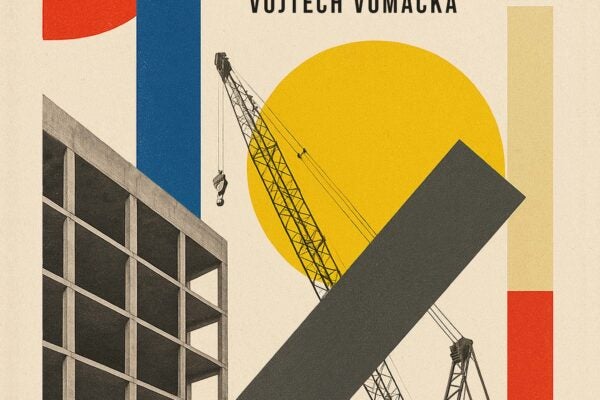
In 1995, just five years after Tim Berners-Lee invented the first web browser, the Mellon Foundation worked with the University of Michigan to spin off and incorporate a promising grant-funded project that aimed to transform academic libraries and expand access to knowledge: JSTOR.
I was fortunate to be given the opportunity to lead the small team working on JSTOR at that time, and every day since, I have woken up thinking about how to grow the impact of JSTOR as a nonprofit and accelerate our mission. Looking back on 30 years, I am amazed by what has been accomplished through the collaborative effort of so many people. With broad engagement and support from the global academic community, JSTOR’s impact is beyond what we ever imagined and growing in new and important ways.
Our initial charge was to digitize the complete back runs of academic journals to help libraries save space, share the costs associated with preservation, and expand access. When we launched our first Arts & Sciences collection in 1997, it was called simply “Phase 1.” That collection took several years to complete and included the archives of 120 leading journals in the humanities and social sciences. We had approximately 250 libraries and publishers engaged with us at the time, largely in the United States.
Today, we’ve selected, sourced, and digitized the complete back runs of 2,860 journals across 60 disciplines to build JSTOR’s Archive Collections. That represents 96 million pages of content, including 13.9 million articles. More than 14,000 libraries in 190 countries/territories and 1,600 publishers are part of this endeavor. Usage of this material topped 210 million item requests in 2024.
Throughout our 30 year history, we have always made decisions based on our mission and the impact we want to have. I strongly believe that this mission-led approach is responsible for much of our success. We make decisions every day of course, but several stand out as especially impactful.
An equity-based approach to participation
In the early days, in addition to securing grant funding, we decided to develop a collection-based model to enable us to raise capital to fund the digitization of new titles in batches so libraries could grow their JSTOR participation at their own pace. We also tiered our fees to ensure all types of institutions could participate. For example, a library might elect to participate in Arts & Science I only, or continue to support and benefit from new collections in the series. The collection fees varied by institutional classification, with a research university contributing more than a small college. Our goal was to widen the tent as much as possible so institutions of any size or means could participate.
In future years, as participation and revenue grew under this model, we decided to further our mission in new ways. We began to provide free and low cost access to institutions throughout Africa and 50 countries in other parts of the world, and we provided greatly discounted access for community colleges and secondary schools. We also launched alumni access, free reading, and JPASS subscription access plans to support access by independent scholars and the public. And we made good on our contractual commitment to share a portion of JSTOR’s revenue with publishers once revenue reached a certain level, providing them with funds to help support their operations and the publication of new scholarship.
No fee increases unless necessary
“Our aim is to maximize our mission; as a nonprofit, we work to generate enough revenue to ensure the long-term preservation of the archives and to continuously invest in our organization to serve the community.”
Our collection-based, tiered model was successful. Participation grew, and over time, we maintained our original fees for JSTOR collections. A medium U.S. institution paid an Annual Access Fee (AAF) for Arts & Sciences I of $4,000 in 1997. We never changed this fee. It was the same in 2024—$4,000—as it was in 1997. Some may pause at this decision; we easily could have increased the fees at the rate of inflation over that period. If we had done so, Arts & Sciences I would cost that same institution an AAF of $8,000 today. We made an active choice to keep fees low and aligned with our needs. Our aim is to maximize our mission; as a nonprofit, we work to generate enough revenue to ensure the long-term preservation of the archives and to continuously invest in our organization to serve the community. Every decision we have made, like our commitment not to increase fees unless needed, has been consistent with that goal.
Thoughtfully support our community through hardship
When the COVID-19 pandemic hit and education moved from in-person to remote overnight, we immediately decided to offer no-cost expanded access to our Archive and Primary Source collections to all institutions and offered $4 million in library fees relief. We also committed to holding fees flat for libraries through 2023 while guaranteeing stable revenue sharing amounts to publishers. These were difficult decisions for us with little insight into what the future would hold, but they were the right ones for our organization and our community. In the end, we turned on full access for more than 4,000 institutions. While these pandemic-related decisions had the most widespread impact of any crisis-driven decisions in our history, they are not the only ones we have made. We have consistently elected to maintain access while waiving fees and providing support when institutions face unprecedented circumstances whether from natural disasters, war, or other challenges.
Evolve our approach to meet our mission
The expanded access we offered during COVID-19 turned out to be a pivotal and instructive moment for us. Were there ways we could expand access to JSTOR even further, based on our experience during and since the pandemic? We worked with the library community to evolve our model, offering a new fee structure to enable those who did not previously participate in all JSTOR Archive and Primary Source collections to continue to do so and for new institutions to get comprehensive access immediately. More than 2,000 institutions have migrated to or signed up for this fee structure. The community’s participation and support in developing this new offering was invaluable. It provides JSTOR and libraries with predictable increases to cover costs, while maximizing library access and the impact of our collective mission.
We also made two other changes at this time. We moved away from a collection-by-collection model for community colleges and began offering the comprehensive access model exclusively and at low cost in order to improve the library resources available to students and faculty at these institutions. We also eliminated the Archive Capital Fee (ACF) on all collections after an assessment determined that we had set aside sufficient funds to ensure the long-term preservation, including future migrations, for the collections.
“With the aggregate changes we have made to our model and fee structure over time, 9,000 institutions now have comprehensive access to all JSTOR Archive and Primary Source collections—that is 65% of all JSTOR participants. Together, these institutions serve millions of students, faculty, and researchers around the world.”
With the aggregate changes we have made to our model and fee structure over time, 9,000 institutions now have comprehensive access to all JSTOR Archive and Primary Source collections—that is 65% of all JSTOR participants. Together, these institutions serve millions of students, faculty, and researchers around the world. Additionally, we now serve millions of people unaffiliated with these institutions through our free reading and JPASS programs. In 2024 alone, 3.2 million individuals have read more than 9 million articles on JSTOR for free, and more than 32,000 individuals have active JPASS plans. We could not have imagined this level of impact when we started thirty years ago, and are so grateful for the collaboration of the academic community in making this possible.
Future changes, grounded in stewardship
Looking ahead, we will continue to use these past decisions as guideposts and make decisions with the same commitment to delivering on our mission and careful stewardship we have demonstrated in the past.
One important decision we have already made for 2025 is that we will implement a fee increase for the first time ever. We are doing this after thirty years because it is necessary for us to do so. This 3% increase on Archive Collection fees will take effect in July 2025 and will be for 4-year higher education institutions and government and nonprofit organizations that license individual Archive Collections. This increase, along with those built into the comprehensive collection model, is needed to cover rising inflationary costs associated with things like healthcare and salaries that all organizations face while also allowing us to continue to add over 2 million pages of content with the moving wall each year and to continuously invest in the utility of the JSTOR platform.
“Across all content types, about 20% of the content on JSTOR is now open access; that’s 4.3 million items. This includes early journal content that is in the public domain and research reports from hundreds of think tanks.”
Our ultimate aim is for all institutions and individuals to have affordable, sustainable access to all of the material on JSTOR and for that material to remain available and useful over time—that is how we define success. We have made incredible strides toward achieving this, but there is more work to do. In addition to evolving participation options and fees for Archive Collections to achieve this, we will also continue to invest in efforts to increase the amount of openly accessible content on the platform. Across all content types, about 20% of the content on JSTOR is now open access; that’s 4.3 million items. This includes early journal content that is in the public domain and research reports from hundreds of think tanks. It also encompasses two important growth areas for JSTOR: monographs that are part of our open access books programs, including Path to Open, and images and primary sources from libraries partnering with JSTOR to steward their digital collections and expand access to them globally.
For thirty years, we have made decisions and pursued new opportunities with a focus on expanding access to knowledge and education for everyone all over the world. We have done so by providing the content and the tools needed to support research, teaching, and learning. At every step, we have worked to make more content free and more affordably accessible while also ensuring the long-term sustainability of our organization and our mission. I am very proud of our track record and am confident that our decisions today, and those we will make tomorrow, are consistent with that commitment and are intended to ensure that 30 years from now, our work will be as meaningful, sustainable, and true to our mission as it is today.
Note: Updated from 4% to 3% on 03/26/2025 due to a shift in economic conditions.



